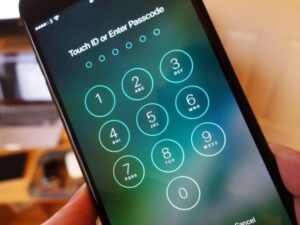Safeguarding Your Spring Break Adventures
March 5, 2024

As the much-anticipated spring break approaches, many individuals gear up for a well-deserved vacation filled with fun, relaxation, and adventure. While you’re focused on making memories, it’s crucial not to overlook the potential cybersecurity pitfalls that can lurk in the shadows. In this blog post, we’ll explore some common spring break cybersecurity hazards and provide practical tips to ensure a safe and secure getaway.
Public Wi-Fi Perils
One of the most significant risks during spring break is the use of public Wi-Fi networks. Whether you’re at a hotel, airport, or cafe, public Wi-Fi is often insecure and susceptible to cyber threats. Hackers can exploit these networks to intercept sensitive information, such as login credentials or personal data.
- Tip: Use a virtual private network (VPN) to encrypt your internet connection, adding an extra layer of security when connecting to public Wi-Fi. Additionally, avoid accessing sensitive accounts, like online banking, while on unsecured networks.
Social Media Oversharing
Sharing your spring break adventures on social media is a common practice, but it can also expose you to risks. Broadcasting your location, activities, and personal information can make you an easy target for cybercriminals, especially if your social media accounts are not properly secured.
- Tip: Review and adjust your privacy settings on social media platforms. Consider sharing your experiences after returning from your trip to minimize the risk of revealing your location in real-time.

Device Security Concerns
The portability of devices like smartphones and tablets makes them essential travel companions. However, losing these devices or having them stolen during your spring break can lead to a potential data breach and compromise your personal information.
- Tip: Enable password protection, biometric authentication, and device encryption on your devices. Regularly back up your data to a secure cloud service or an external hard drive in case of loss or theft.
Phishing Attacks
Cybercriminals often take advantage of popular events and holidays to launch phishing attacks. Spring break is no exception. Be cautious of emails or messages offering exclusive deals, travel promotions, or seemingly urgent requests for personal information.
- Tip: Verify the legitimacy of emails and messages before clicking on any links or providing personal information. Use official websites or contact the organization directly to confirm the authenticity of any offers.
Unsecured ATMs and Payment Risks
When using ATMs or making payments at unfamiliar locations, you expose yourself to potential financial risks. Skimming devices and unsecured payment systems can compromise your credit or debit card information.
- Tip: Use ATMs located in well-lit, secure areas, and be vigilant for any unusual devices attached to card readers. Consider using mobile payment apps or prepaid travel cards for added security.

As you embark on your spring break adventures, it’s crucial to stay vigilant and prioritize cybersecurity. By taking proactive steps to secure your devices, protect your personal information, and stay aware of potential threats, you can ensure a safe and enjoyable vacation without falling prey to cyber hazards. Safe travels!
Have Any Question?
Call or email Cocha. We can help with your cybersecurity needs!
- (281) 607-0616
- info@cochatechnology.com




